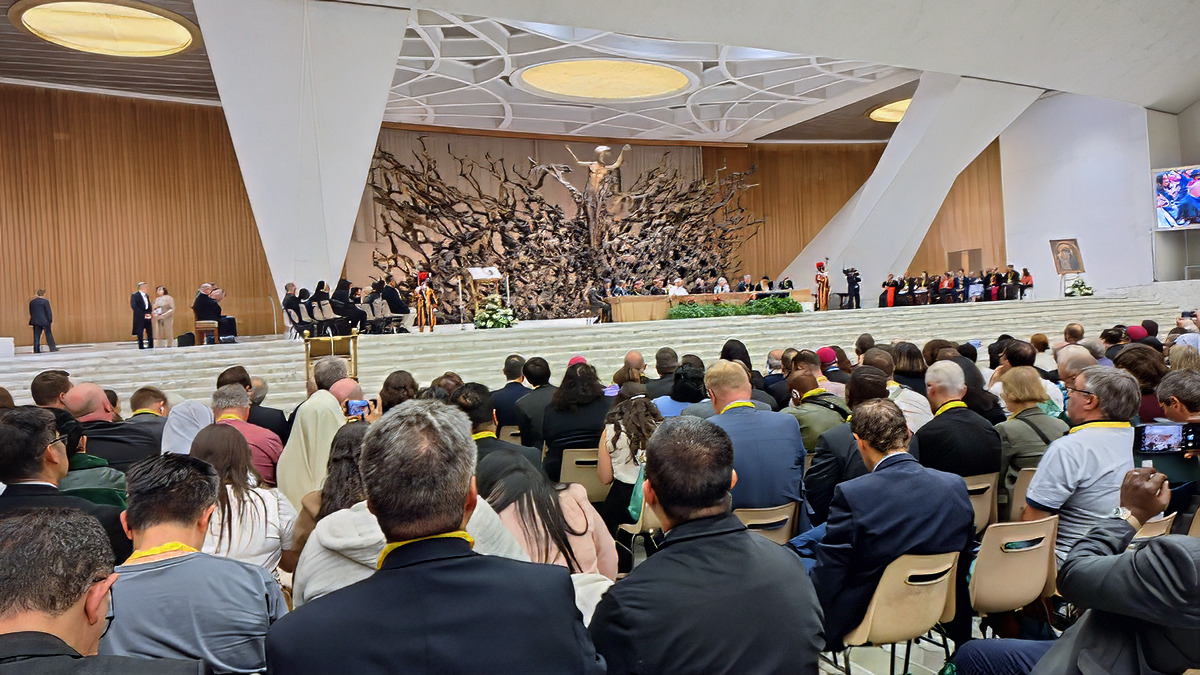Papal commitment to synodality is clear; but can the same be said for the global Church? When some dioceses are deeply engaged while others remain indifferent or even obstructive, is it time to question not fatigue but resistance?
Is “synodality fatigue” code for institutional inertia?
A rousing Jubilee celebration
The just-concluded Jubilee of Synodal Teams and Participating Bodies in Rome marked a year of synodality since the Final Document was approved at the 24 October session of the Synod on Synodality.
The commitment of the 1,700 delegates to synodality was palpable.
Laywomen, laymen, and clergy continued the spiritual journey in prayer, listening, and dialogue.
The liturgies were prayerful, well-organised, and unifying.
Discussion was free and showed not even a hint of clericalism, as you might expect in a synodal context.
The enthusiasm of this Jubilee group of synodality converts and practitioners is understandable: they embrace synodality as a mode of spiritual discernment.
But are they simply a narrow exception?
Uneven global response
Support from key Vatican levels is unwavering. Pope Francis initiated this journey by explaining that he wanted a different Church, not a new Church.
Understood as a listening Church walking together, synodality is radical—especially within a hierarchical structure.
Pope Leo confirmed his commitment to synodality from his first balcony appearance and has continued to reinforce it, particularly during the Jubilee gatherings.
Yet the global response remains uneven and, in some places, starkly resistant.
Jubilee participants reported patchy uptake across countries to the point where in Germany, a group of bishops, including a cardinal, was reported to have prohibited any semblance of synodal action.
A cultural shift
By its very nature, synodality demands cultural change. Change of this scale is rarely swift—especially for a Church historically comfortable with waiting centuries to change.
At the Jubilee High Mass, Pope Leo reminded delegates that Pope Francis introduced synodality as a step towards becoming missionary disciples; he also acknowledged that the pace of uptake will vary.
Hope in the Spirit
What is difficult for some is the slowness of uptake—or the absence of it altogether.
As hard as it may be, I have come to the conclusion—assisted by this Jubilee Year of Hope—that we must allow the Holy Spirit to do its work.
Our focus should be on building structures that support conversion, developing mechanisms that facilitate spiritual discernment, and removing obstacles to synodal action. We need to persist in collaborative work, ensure our practices are genuinely synodal, and provide adequate formation for our teams.
This is not a fad or a one-day wonder.
We have just completed synodality’s first full year. Fatigue has no place on such a journey, because we are in it for the long haul.

- Justin Stanwix is an active permanent deacon in the Diocese of Wollongong, Australia. After 40 years in commercial law practice he was ordained deacon. He has a love for liturgy and especially for its artful practise dating from Vatican II deliberations. He presents and writes on current Church topics including for some years in La Croix International. Justin has a commitment to synodal layout of church interiors and the way we assemble for Eucharist.

